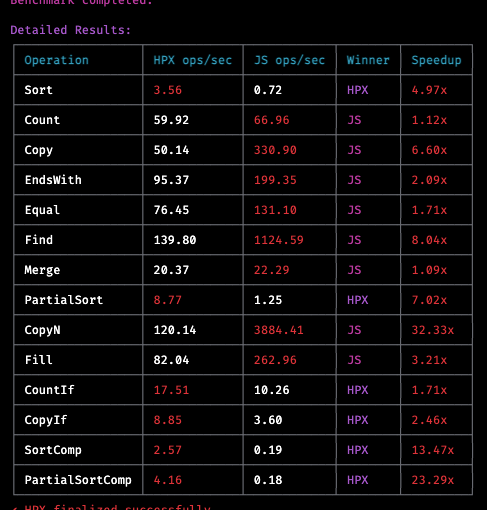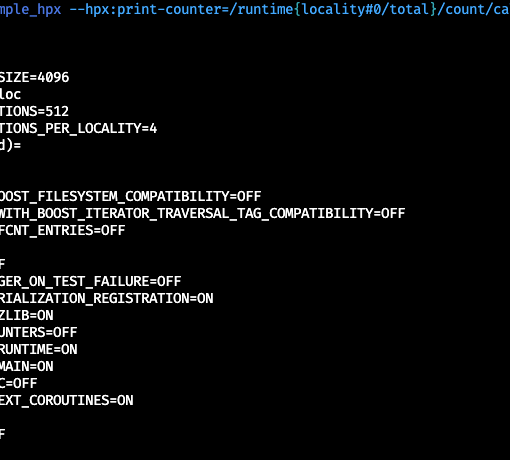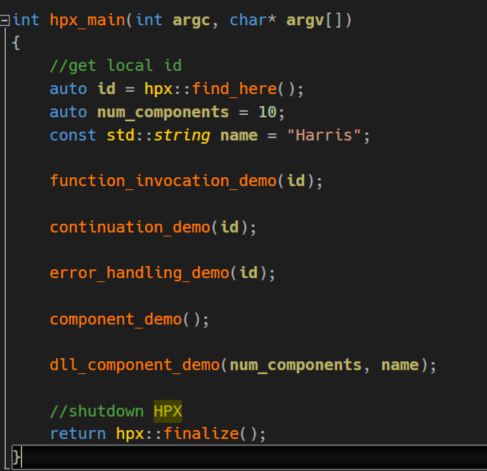This article offers a personal look at a C++ library implementing PKCE with Keycloak. It’s intended more as a learning exercise than a production-ready solution. You’ll find a C wrapper and additional Python and Lua wrappers, plus a quick rundown on PKCE fundamentals, library structure, and example demos.
C++
Explore building a Node.js addon with HPX, a C++ parallelization framework. This article covers the integration challenges, such as managing asynchronous operations and reducing performance overhead. Learn how batch predicate functions can enhance the performance of complex algorithms like countIf and sort, while simpler tasks see limited gains. Ideal for developers interested in combining JavaScript with parallel C++ capabilities, the guide includes practical examples and benchmark results.
This article explores the powerful parallelization and distributed computing capabilities of the HPX framework. Starting with installation on macOS, it walks through configuring, compiling, and testing HPX on a modest machine, highlighting key features like asynchronous programming, task-based parallelism, and HPX components. Whether new to HPX or looking for practical examples, this guide offers a hands-on approach to understanding and utilizing HPX in real-world scenarios.
Writing HDAs with htmx and C++-
Yesterday, I discovered an experimental Big Data processing framework written in C++ called Thrill. As most of you surely know, the well-known frameworks of this kind are mostly based on JVM, like Apache Spark or Apache Flink. This, of course, has many advantages, like easily accessible interfaces and a more domain-oriented approach, as we don’t have to deal with “Ceremony Code” or any internals that don’t touch our domain logic. However, everything comes at a cost and utilizing a VM is a price to be paid no matter how optimized your code is. It’s no wonder these projects often resort to […]
A few months ago I discovered a Project from Louisiana State University led by Prof. Kaiser that designs and develops a new execution model for future high performance architectures. It’s called ParalleX and its C++ implementation is named HPX (High Performance ParalleX). It supports operating systems like Linux or Windows and several Build-Toolchains (GNU, MSBuild, CMake etc.). In this article we’ll use Windows 10 x64 and Visual Studio 2015 to build up the base structure of HPX itself plus a small collection of demos showing some of the key aspects of it. The sources can be found here. Building HPX Before we can […]





